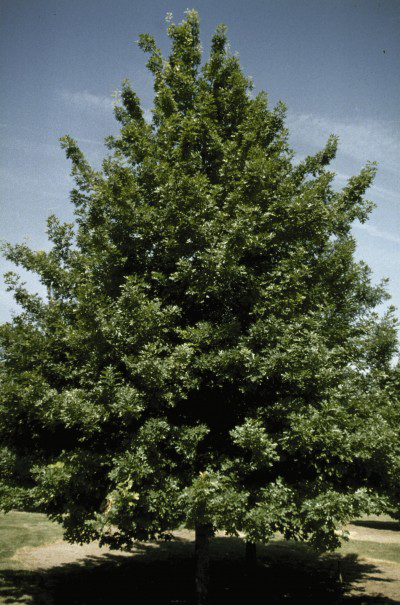
Quercus shumardii
The deeply cut lustrous dark green leaves develop a good russet-red to red fall color. It requires moderate watering one established.
High survival rates and steady growth make Shumard oak a valuable contributor to rehabilitation and reforestation of bottomlands and upland sites, including minespoils. Shumard oak also provides an excellent shade or specimen tree – to be used in lawns, parks, along streets, and in buffer strips and median plantings. The leaves remain green long into the fall and then turn a deep orange-red. The trees are strong, long-lived, and grow relatively quickly. They potentially grow to a large size and should be planted with this in mind. The species has been successfully grown in urban areas where air pollution, poor drainage, compacted soil, and/or drought are common. Compared to the similar northern red oak (Q. rubra), Shumard oak tolerates a broader range of soil moisture, and its more southern distribution provides stock better suited for that area. Shumard also apparently is little affected by chlorosis, which often is a problem for other oaks in high pH soils.
Type of Plant: Deciduous Shade Tree
Distinguishing Characteristics:
Water Use: Moderate
Flower Color: NA
Sun/Location: Full Sun
Approximate Height at Maturity*: 75'
Approximate Spread at Maturity*: 36'
Tree Shape: Pryramidal to rounded
*Under average conditions in Northern New Mexico
